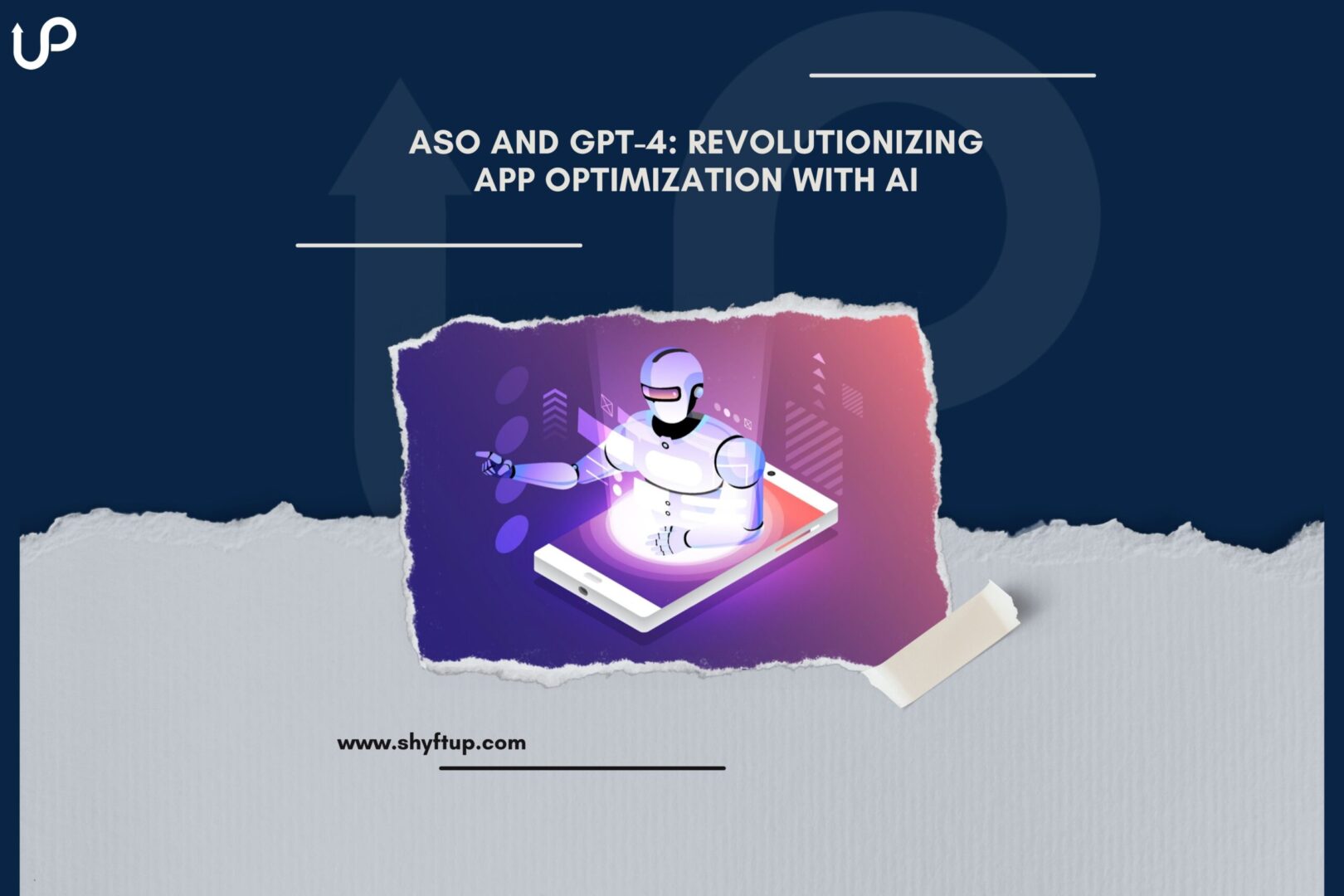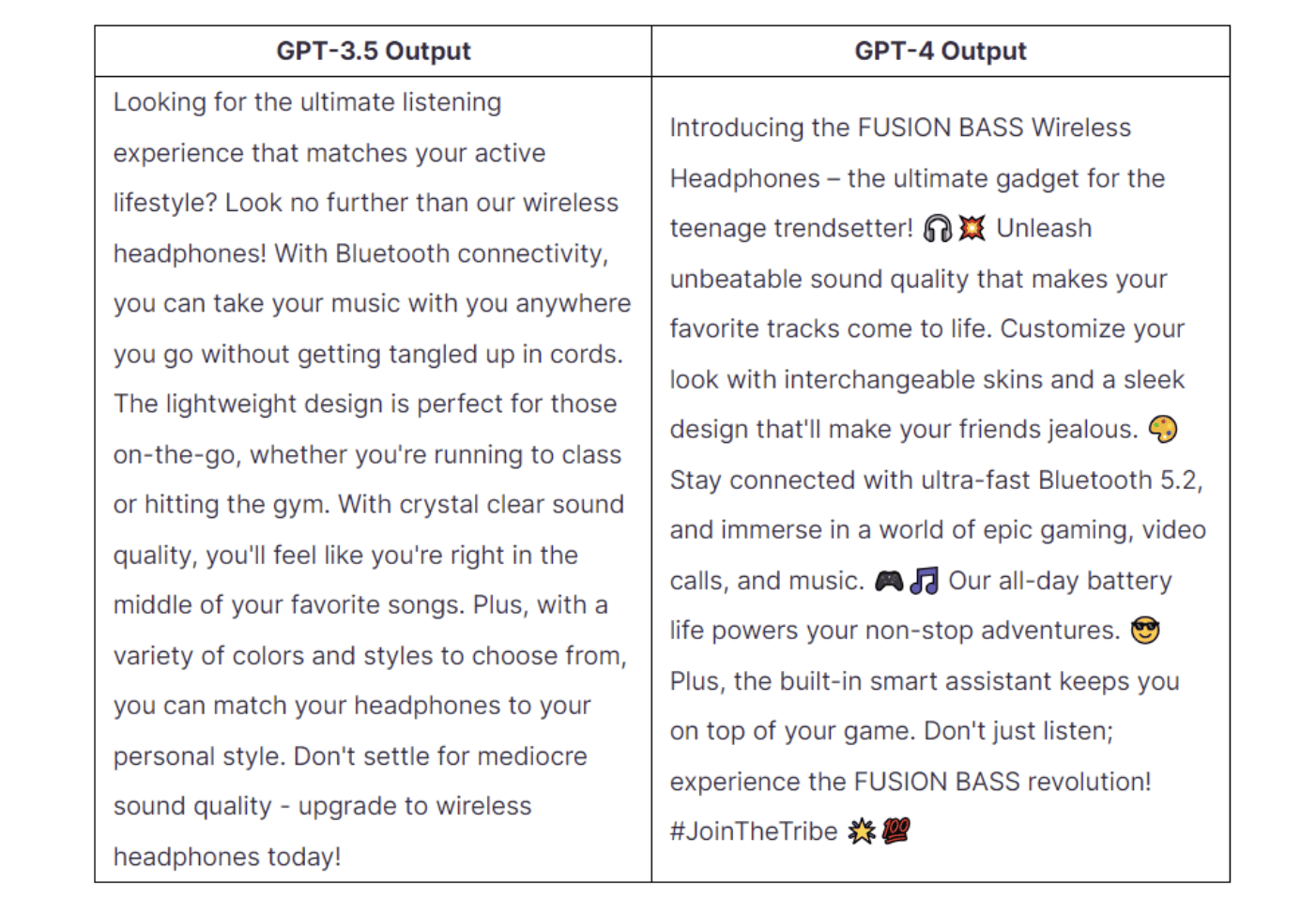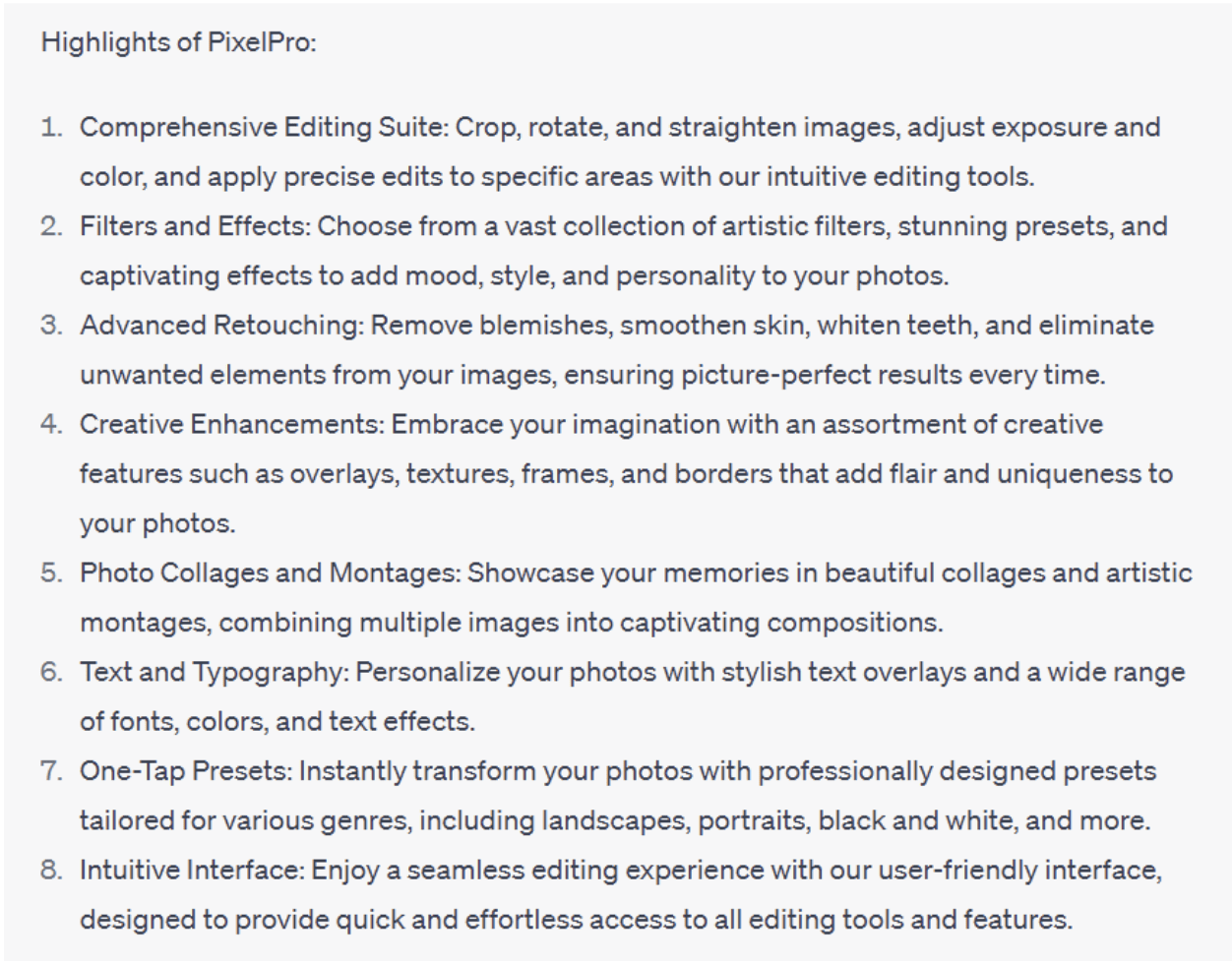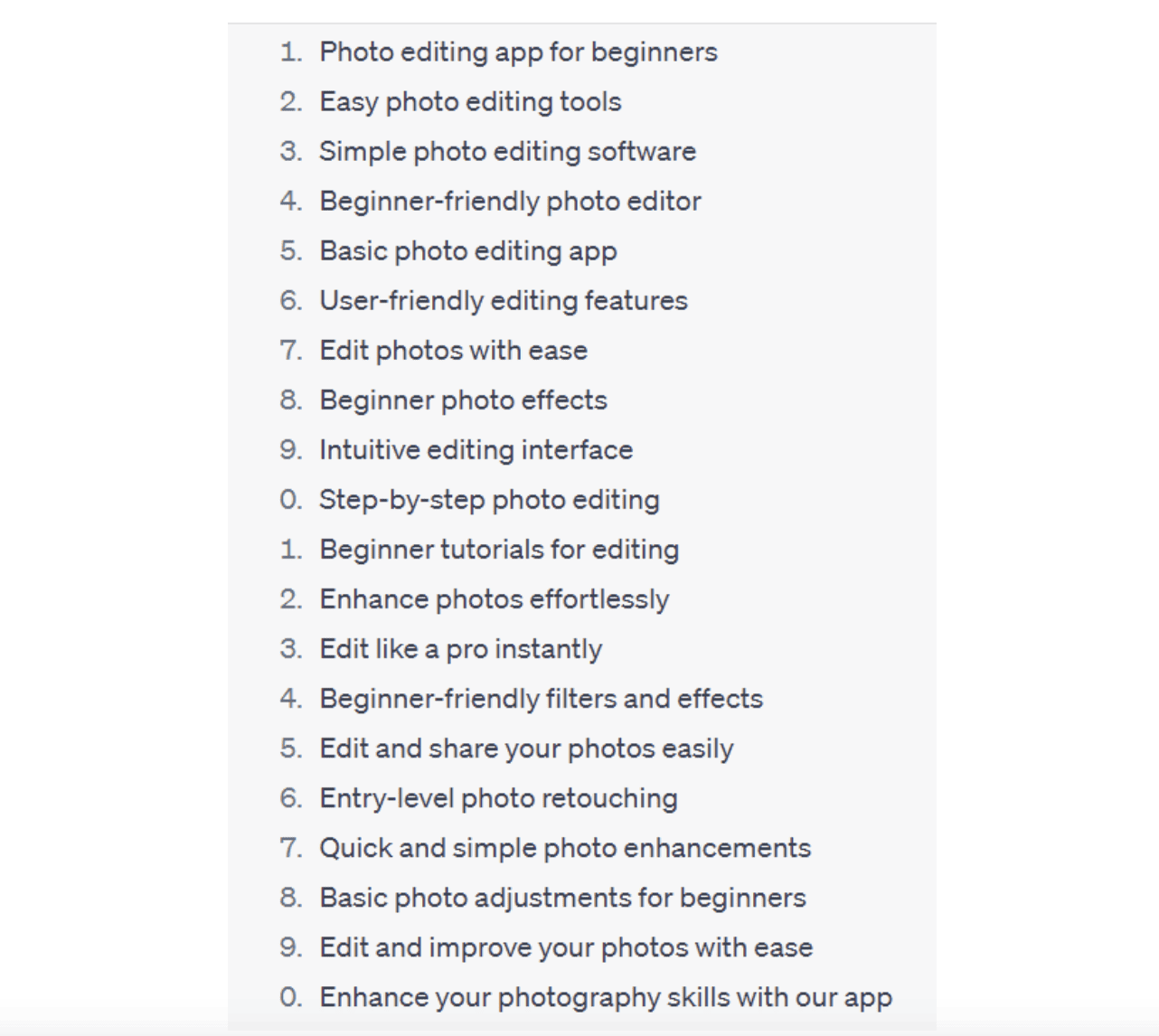
There’s no doubt: we have come to a time when we can’t ignore the rise of artificial intelligence (AI) anymore. It has touched societies in almost every aspect of people’s lives. Thus, as an app marketer, developer, and owner, you might have various questions about artificial intelligence, particularly how it can help you improve your App Store Optimization (ASO) effort.
In this post, let us take a look at ASO and GPT-4. Discover how you can use GPT-4 to improve your app ranking, visibility, and, ultimately, revenue.
What is GPT-4?
GPT-4 (Generative Pre-Trained Transformer 4) is the latest technological breakthrough created by OpenAI. It uses a multimodal large language model that is something that you don’t see in its predecessors. This means that it will not only accept text inputs or prompts, but it can actually accept image input!
With the powerful machine learning capabilities of GPT-4, it has a wide application on various human-level performances in academic and professional fields.
If GPT-4 can benefit a lot of professionals and businesses, just think about what it can do for your app. As you can imagine, GPT-4 holds a huge potential that could dramatically improve your app’s success.
What is the difference between GPT, ChatGPT, GPT-3, and GPT-4?
Now, before anything else, it is a must that you understand the terminologies that involve OpenAI’s technologies. Without a basic understanding of the terminologies, you can easily miss out on new developments in the world of artificial intelligence.
GPT, which means Generative Pre-Trained Transformer, is the term used to refer to a large language model (LLM) that gives AI apps the capability to create text outputs based on the given prompts. GPT has one of the largest neural networks that come with billions upon billions of parameters that allow it to provide exceptionally accurate answers as if given by real human beings.
On the other hand, ChatGPT is the specific Chatbot app that uses GPT technology. ChatGPT is what you call the app found in chat.openai.com, used by millions of people today.
GPT-2, GPT-3, GPT-3.5, and GPT-4 are the versions of GPT. At the time of this writing, the free ChatGPT version uses GPT-3.5.
On March 14, 2023, OpenAI initially released GPT-4, which is an all-new and improved version of GPT-3. So, what makes GPT-4 different from GPT-3?
As mentioned above, GPT-4 can accept image input to generate text input. Moreover, GPT-4 can do human-level performance and activities such as answering and passing exams. Developers tested GPT-4 to answer bar exams, and it even passed the test. Finally, GPT-4 is more creative, reliable, and factual than its predecessors.
How to use GPT-4 for ASO?
Now, we come to the core of our discussion. Given the powerful features and capabilities of GPT-4, how can you use it for App Store Optimization (ASO)? Here are some of the best ways to do so:
App Description
With the more advanced and powerful machine learning capabilities of GPT-4, creating high-quality app descriptions has become much easier and even more efficient. It is fast, inexpensive, and, most importantly, impressive.
Just to give you an example, here’s what ChatGPT gave when given the prompt, “Write an app description that I can use in Google Store for my photo-editing app.”
ChatGPT generated this answer in just less than 5 seconds! You can already see how impressive the app description is. Not only that, but it also added the key features of the photo-editing app in a bulleted format:
It ended with this last paragraph:
ChatGPT left a note at the end saying, “This app description is a fictional example and can be modified and tailored to suit your actual photo-editing app and its unique features.”
There’s no doubt that ChatGPT is a powerful tool that you can use to create app descriptions quickly. Even if you don’t use the answer word for word, it can still give you ideas and guide you through the writing process.
If you’re not satisfied with the answer given, you can change your prompt and make it more specific or detailed. You can also click on the “Regenerate response” button to generate a different response.
Now, in the example above, we used ChatGPT, which currently uses GPT-3.5. Just imagine what responses you can get when you use the more powerful OpenAI’s GPT-4.
Just to give you an idea of how different GPT-3.5 and GPT-4 responses are, take a look at the following responses when asked to create a copy for a wireless headphone:

Keyword Research
Yes, GPT-4 is so powerful that you can use it for keyword research, a feature you usually find in dedicated keyword research tools.
To start using GPT-4 for keyword research, here are the steps you can take:
1. Provide details
You need to first provide specific information about your app. For example, you need to specify what your app is all about, its category, features, and target audience. You can also include the specific keywords you want to explore.
2. Generate keyword ideas
Once GPT-4 already has an idea of what your app is, you can then ask for keyword ideas. You can use prompts such as, “What are some relevant keywords for a photo editing app targeting newbie photographers?” Using ChatGPT, we get the following result:
Looking at the keywords, you can most certainly see how GPT can provide you with relevant keywords that you probably haven’t thought of before.
3. Ask for variations or filters and refine
What’s great about GPT-4 is you can provide a follow-up question or instruction to your previous prompt. If you want to get more keyword suggestions, you can ask GPT-4 for them. You can even ask GPT-4 to remove keywords with low volume or high competition.
4. Generate long-tail keywords
Long-tail keywords may have lower search volume, but they have a higher conversion rate because of the higher intent that comes with them. You can also use GPT-4 to produce a list of long-tail keywords for your app.
Although GPT-4 is a powerful tool for keyword research, you need to understand that it has some limitations. GPT-4, like its predecessors, is, after all, primarily an AI language model, and thus, it lacks the specific features of a keyword research tool. That’s why, when it comes to estimating keyword difficulty and competition level, it won’t be able to give you good answers.
Nevertheless, you can still use the information you got from GPT-4 and combine it with a keyword research tool to further improve your app ranking.
User reviews
You should know by now how user reviews, and ratings can affect your app’s ranking and visibility. That’s why you should never ignore user reviews. You can use GPT-4 to generate responses to your users.
GPT-4 can provide engaging, respectful, and relevant responses to your users. With GPT-4, you can communicate with your users in a more professional and conversational manner, thereby increasing the likelihood of getting more positive user reviews.
Content marketing
App Stores are filled with millions of apps, all vying for users’ attention. Undoubtedly, it’s a highly competitive platform. That’s why you need to think outside the box to support your ASO effort. That’s where creating a website dedicated to your app can help.
You can create a website for your app and improve its authority in your industry or niche. Content is the backbone of a great website with a high search engine ranking. You can produce unlimited content with the help of GPT-4.
Once you have established your authority, more and more people visit your website, and you can direct that traffic to your app store listing. This will then, in turn, improve your app’s visibility and ranking in app stores.
Prepare your app for AI innovation
There’s no doubt: there are still many things to see how AI will exactly change the app industry and how app marketers and developers perform their App Store Optimization strategies.
Whatever happens in the future, it would certainly be advantageous if you have a team of ASO experts working by your side. That’s what ShyftUp is here for.
ShyftUp is the leading user acquisition company today with years of professional experience. They have the vital expertise and tools to help you cope with the various changes brought by artificial intelligence.
Give ShyftUp a try today and see how they can bring your app to a new level of success!
How can ASO benefit from the advancements in artificial intelligence?
Artificial intelligence produces high-quality text output and content that can be used for app marketing strategies. Moreover, AI offers various answers that guide app marketers in formulating new ideas on how to improve app ranking and visibility.
Is Chat GPT-4 free to use?
At the time of this writing, GPT-4 isn’t free. You can use the new GPT-4 if you have access to ChatGPT Plus, which is $20 per month.
How is GPT-4 different from its predecessors?
GPT-4 can now accept images as part of your prompts. Aside from that, GPT-4 is more accurate, reliable, and powerful compared to its predecessors.




